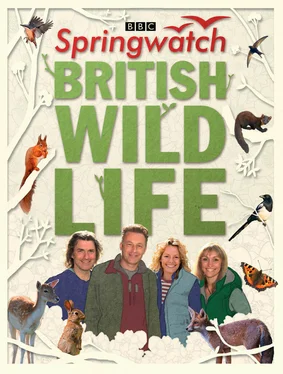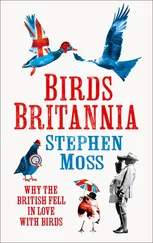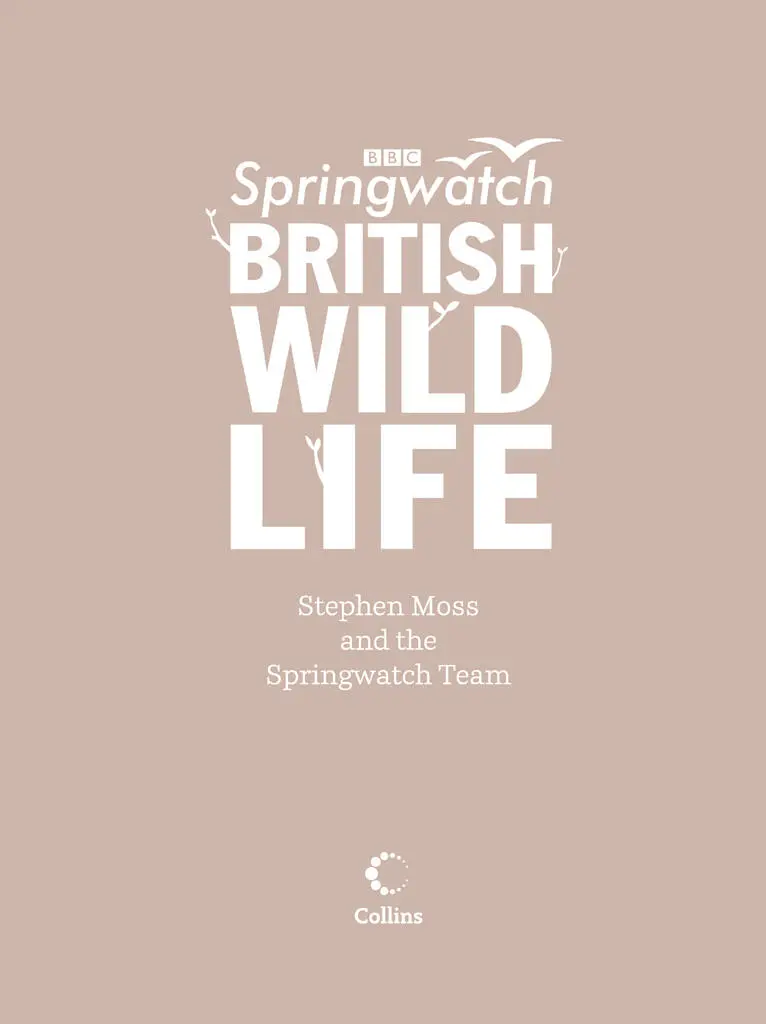
To Britain’s wonderful wildlife, for giving so much pleasure to so many people.
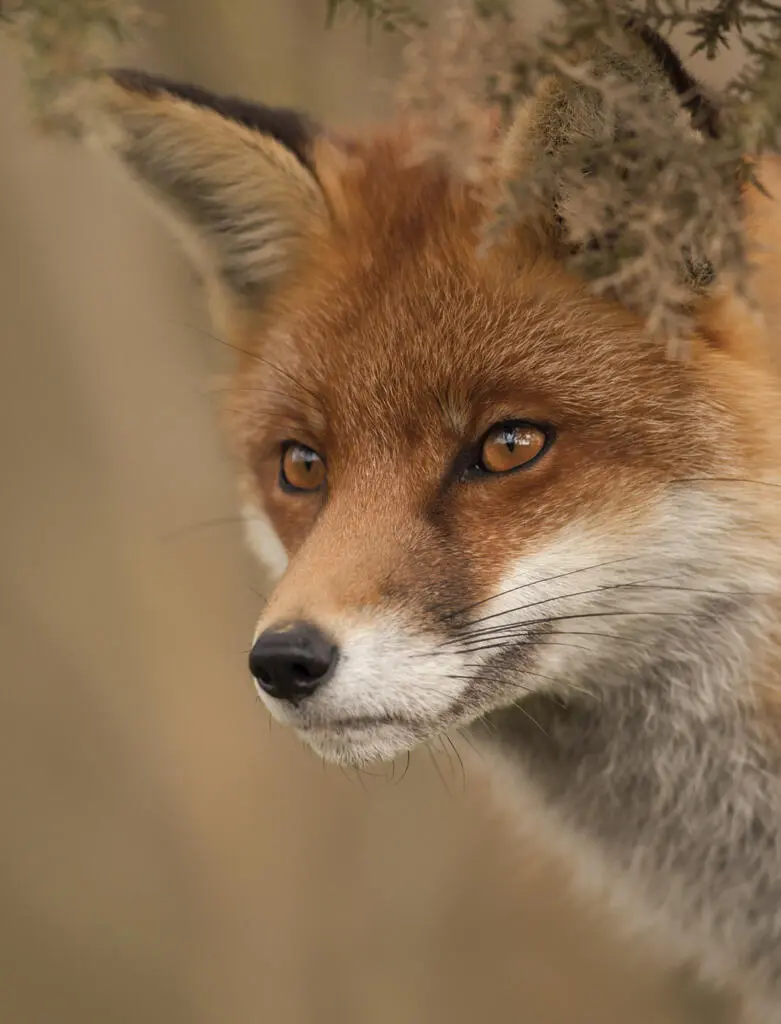
©Simon Litten/FLPA
Contents
Cover
Title Page
Dedication To Britain’s wonderful wildlife, for giving so much pleasure to so many people. ©Simon Litten/FLPA
Introduction Introduction Like the monarchy, afternoon tea and the weather, Springwatch is a British institution. Of course it didn’t start that way: in fact, when it began, back in 2003, it wasn’t called Springwatch at all. Wild in Your Garden was a week of live TV programmes broadcast from a suburb of Bristol, presented by Bill Oddie, Kate Humble and Simon King. The following year it moved to Devon, was extended to three weeks, and turned into Britain Goes Wild . It wasn’t until 2005 that it finally acquired the name Springwatch . Since then, it has changed location twice (to Pensthorpe in Norfolk and Ynys-Hir in mid-Wales), spawned numerous spin-offs, including Autumnwatch, Snow Watch and Winter Watch , and acquired a whole range of new presenters including Chris Packham, Martin Hughes-Games and Michaela Strachan. It has also become as fixed a part of the TV schedules as EastEnders and Top Gear . The success of all these shows, and the various website content, campaigns and events surrounding them, is reflected in the fact that the British have rediscovered their age-old passion for wildlife. Actually it was always there, it was just that for a long time those in charge of the TV schedules preferred their wildlife to be foreign and exotic – lions and elephants rather than badgers and blue tits. Springwatch has shown that there is a real appetite not just for watching wildlife on our doorstep, but for learning about it, too. That is what the Springwatch Guide to British Wildlife is all about. It is designed to help you learn more about the wildlife featured in the programmes: from the common and familiar species such as blackbirds and blue tits, through the more obscure examples such as natterjack toads and rare orchids, to iconic creatures such as the killer whale and white-tailed eagle. Each creature or group of plants or animals gets its own illustrated double-page spread, featuring fascinating facts and details of their lives. Of course this can only scratch the surface: there are plenty of specialised guides available to every group of Britain’s wild creatures. But once you are hooked, it will hopefully inspire you to learn more about the wildlife we treasure so much. ©Marko König/Imagebroker/FLPA The white-tailed eagle (also known as the sea eagle) is Britain’s largest bird of prey, with a wingspan of over 2m (6ft).
Birds Birds ©Horst Jegen/Imagebroker/FLPA
Tits
Finches
Buntings
Blackbird, Song Thrush & Mistle Thrush
Winter Thrushes & Waxwing
Black Crows
Magpie & Jay
Woodpeckers
Nuthatch & Treecreeper
Sparrows
Wagtails
Wren
Robin
Starling
Swift, Swallow & Martins
The Oakwood Trio
Warblers
Owls
Barn Owl
Pigeons & Doves
Cuckoo & Nightjar
Skylark
Pheasant & Partridges
Grouse
Small Falcons & Sparrowhawk
Peregrine
Buzzards & Harriers
Eagles
Osprey
Red Kite
Auks
Puffin
Gulls
Terns
Skuas
Ringed & Little Ringed Plovers
Lapwing
Small & medium-sized Waders
Large Waders
Oystercatcher & Avocet
Rails
Dabbling Ducks
Diving Ducks
Geese
Swans
Pelagic Seabirds
Gannet, Cormorant & Shag
Herons & Egrets
Kingfisher & Dipper
Grebes & Divers
Mammals
Fox
Badger
Otter
Seals
Deer
Rabbit & Hares
Stoat & Weasel
Bats
Small Mammals
Water Vole
Dormouse
Harvest Mouse
Hedgehog
Pine Marten & Polecat
Red & Grey Squirrels
Mole
Whales & Dolphins
Insects & other Invertebrates
Butterflies
Moths
Dragonflies & Damselflies
Crickets & Grasshoppers
Beetles
Bees & Wasps
Ants
Spiders
Woodlice, Slugs & Snails
Rockpool Life
Reptiles, Amphibians & Fish
Snakes
Lizards
Newts
Frogs & Toads
Freshwater Fish
Salmon & Trout
Sharks
Plants & Flowers
Deciduous Trees
Coniferous Trees
Orchids
Hedgerow Flowers & Plants
Woodland Flowers
Meadow Flowers
Marsh Plants & Flowers
Moorland & Heathland Plants
Urban & Roadside Plants
Grasses, Sedges & Rushes
Berry-bearing Plants
Carnivorous Plants
Ferns, Mosses and Lichens
Fungi
List of Searchable Terms
Acknowledgements
Copyright
About the Publisher
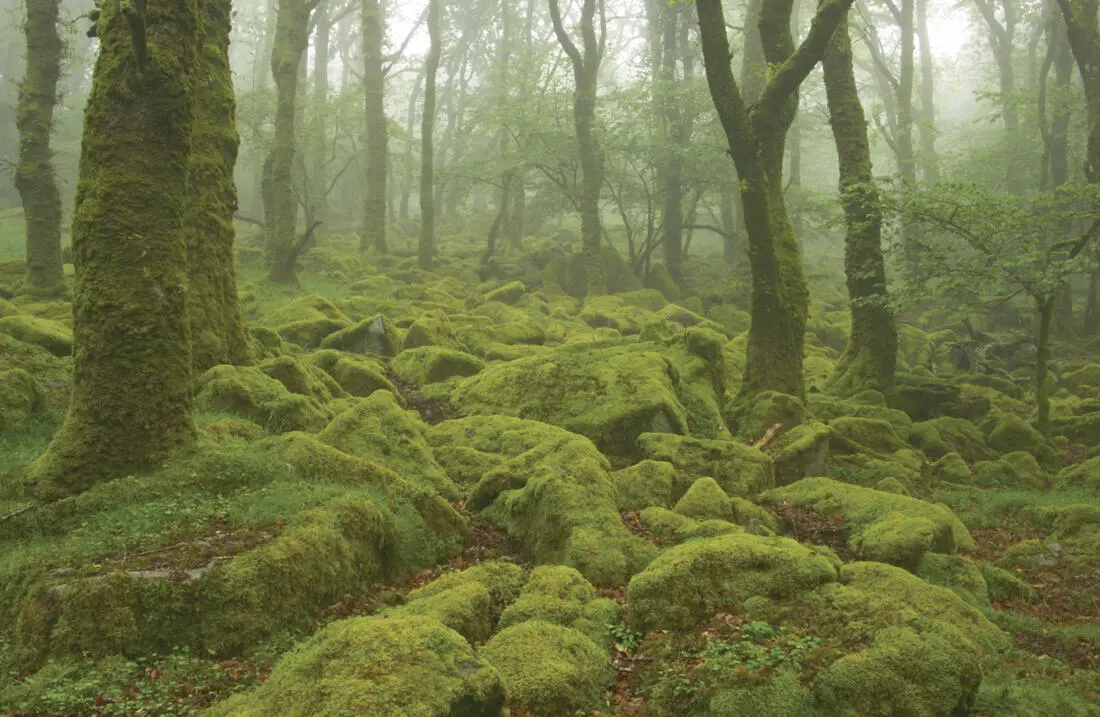
©Bill Coster/FLPA
Introduction
Like the monarchy, afternoon tea and the weather, Springwatch is a British institution. Of course it didn’t start that way: in fact, when it began, back in 2003, it wasn’t called Springwatch at all. Wild in Your Garden was a week of live TV programmes broadcast from a suburb of Bristol, presented by Bill Oddie, Kate Humble and Simon King. The following year it moved to Devon, was extended to three weeks, and turned into Britain Goes Wild . It wasn’t until 2005 that it finally acquired the name Springwatch .
Since then, it has changed location twice (to Pensthorpe in Norfolk and Ynys-Hir in mid-Wales), spawned numerous spin-offs, including Autumnwatch, Snow Watch and Winter Watch , and acquired a whole range of new presenters including Chris Packham, Martin Hughes-Games and Michaela Strachan. It has also become as fixed a part of the TV schedules as EastEnders and Top Gear .
The success of all these shows, and the various website content, campaigns and events surrounding them, is reflected in the fact that the British have rediscovered their age-old passion for wildlife. Actually it was always there, it was just that for a long time those in charge of the TV schedules preferred their wildlife to be foreign and exotic – lions and elephants rather than badgers and blue tits. Springwatch has shown that there is a real appetite not just for watching wildlife on our doorstep, but for learning about it, too.
That is what the Springwatch Guide to British Wildlife is all about. It is designed to help you learn more about the wildlife featured in the programmes: from the common and familiar species such as blackbirds and blue tits, through the more obscure examples such as natterjack toads and rare orchids, to iconic creatures such as the killer whale and white-tailed eagle. Each creature or group of plants or animals gets its own illustrated double-page spread, featuring fascinating facts and details of their lives.
Of course this can only scratch the surface: there are plenty of specialised guides available to every group of Britain’s wild creatures. But once you are hooked, it will hopefully inspire you to learn more about the wildlife we treasure so much.
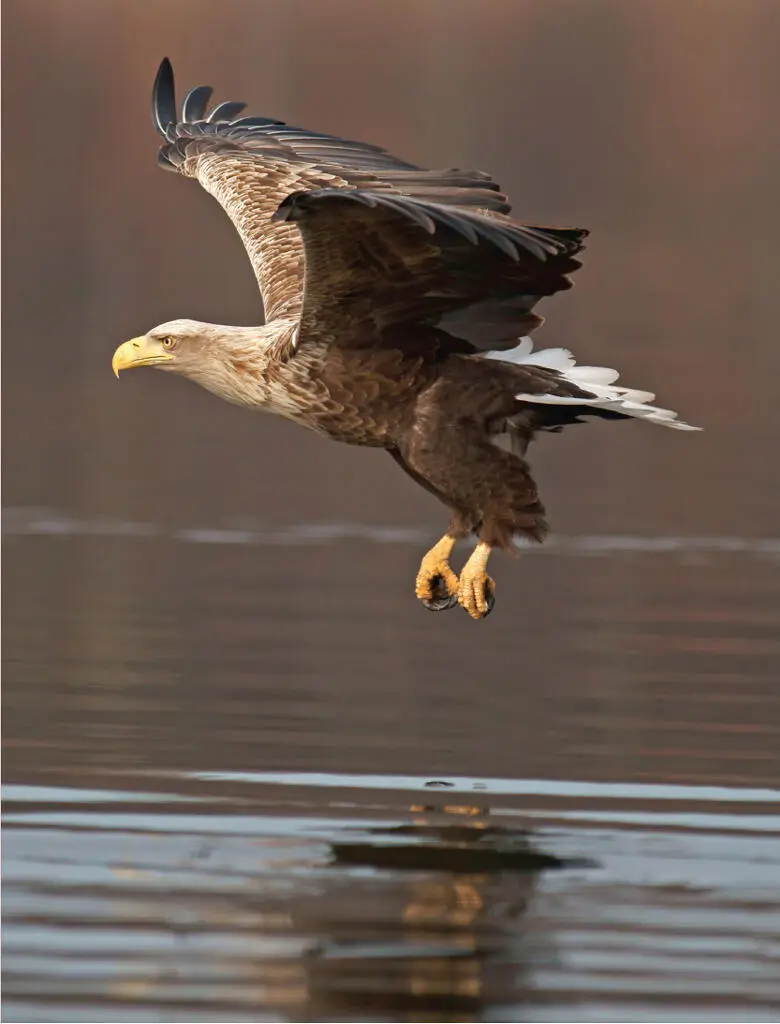
Читать дальше
